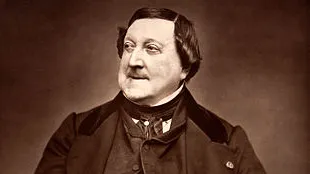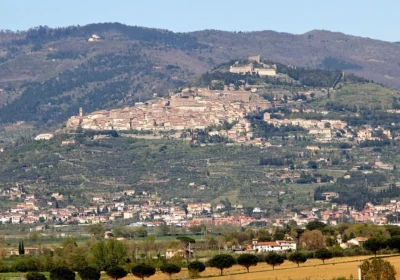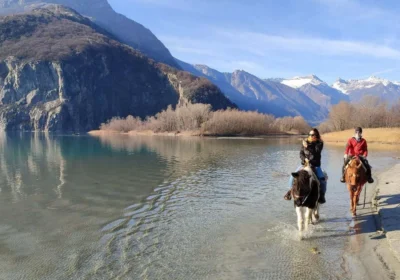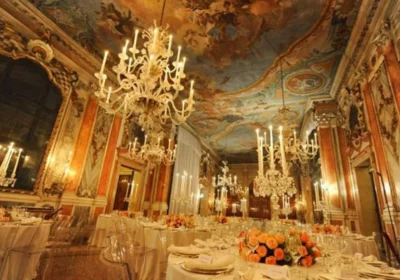The itinerary includes the main sites associated with the life and work of outstanding composers.
The Basilica of St Petronius: in 1436 Pope Eugene IV built the magnificent Chapel, which became famous throughout Europe. The choir, decorated with inlays by Augustine de Marchi and the chorale, painted with miniatures, vividly testify to the importance of music in the life of Bologna. To the right of the Altar is the oldest organ still in use today, of impressive dimensions, built in 1475 by Lorenzo di Giacomo da Prato.
From the Basilica, under the portico del Pavaglione, you will go to the Archigymnasium Palace. The Archigymnasium Palace: it has been the building of the University of Bologna since the 16th century. After climbing the ancient staircase of the Jurists, you reach the Auditorium of the students of ancient Roman law, which was renamed “Stabat Mater” to commemorate the grand performance of the religious opera “Stabat Mater” in 1842, set to music by Rossini, who lived in Bologna at that time. The opera was first performed by conductor Donizetti.
Gioachino Rossini’s House – In 1822, Gioachino Rossini bought a flat in a house designed in classical style, with many inscriptions on the façade. Rossini’s house is private, so it is not possible to visit.
International Museum and Music Library: in this beautiful palace Maestro Rossini lived with his second wife Olimpia Pelisser during his last years in Bologna. The rooms decorated by the artists Martinelli, Palaggi, Barozzi and Basoli are today the ideal interior for the collection of the International Museum and Music Library.
The Museum tells us the five hundred years of history of Eastern and Western music through the Bologna Collection. The treasure of the Museum is the 100,000 bibliographic collections, which constitute one of the largest music libraries in the world, and the Picture Gallery. All this once belonged to the famous monk Padre Giovanni Battista Martini. In a separate part of the museum you can see the lute making and restoration workshops.
Home of Ottorino Respighi: leaving the music museum-library you will head along Via Maggiore and turn into Via Guido Reni, where you will find the workshop of Ottorino Respighi, who is considered one of the most representative among the Italian masters of the symphonic and theatre school. Here is the Palazzo Fantuzzi, one of the most splendid among the Senatorial Palaces in Bologna, where Ottorino Respighi was born.
Conservatorio Giovanni Battista Martini, Piazza Rossini: next to the Church of San Giacomo is the still active Philharmonic Museum, created in 1804, thanks to the collaboration between the Municipality and the Academic Philharmonic Society, who decided to provide the city with a reliable, reputable music school. Among the first pupils was the young Gioachino Rossini. In 1942, the lyceum became state-run and became known as the Giovanni Battista Martini Conservatory of Music. Giovanni Battista Martini – in honour of the Bolognese Franciscan friar who was renowned in Europe for his musical culture and rare bibliographic and iconographic collections.

















